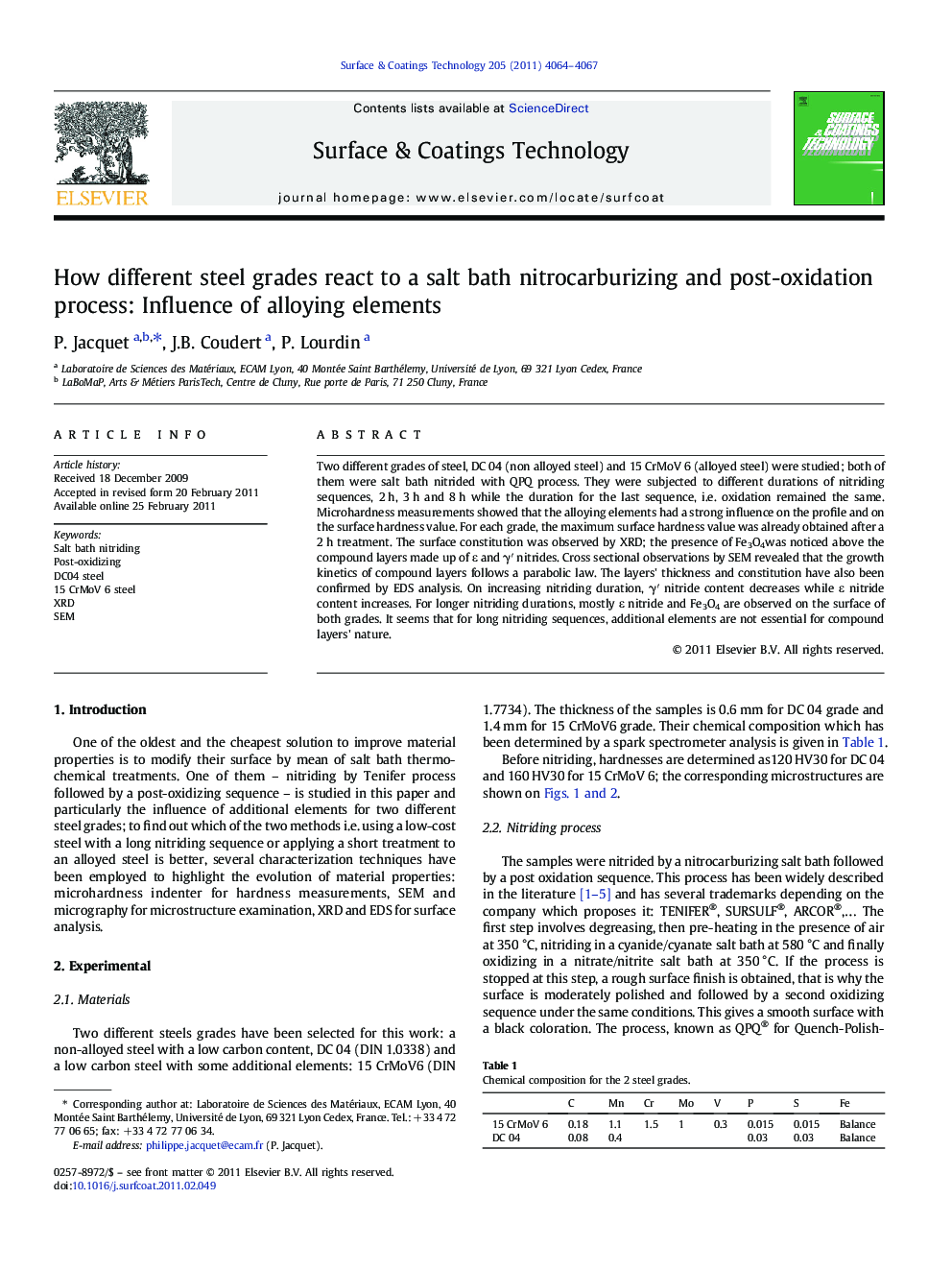| Article ID | Journal | Published Year | Pages | File Type |
|---|---|---|---|---|
| 1659196 | Surface and Coatings Technology | 2011 | 4 Pages |
Two different grades of steel, DC 04 (non alloyed steel) and 15 CrMoV 6 (alloyed steel) were studied; both of them were salt bath nitrided with QPQ process. They were subjected to different durations of nitriding sequences, 2 h, 3 h and 8 h while the duration for the last sequence, i.e. oxidation remained the same. Microhardness measurements showed that the alloying elements had a strong influence on the profile and on the surface hardness value. For each grade, the maximum surface hardness value was already obtained after a 2 h treatment. The surface constitution was observed by XRD; the presence of Fe3O4was noticed above the compound layers made up of ε and γ′ nitrides. Cross sectional observations by SEM revealed that the growth kinetics of compound layers follows a parabolic law. The layers' thickness and constitution have also been confirmed by EDS analysis. On increasing nitriding duration, γ′ nitride content decreases while ε nitride content increases. For longer nitriding durations, mostly ε nitride and Fe3O4 are observed on the surface of both grades. It seems that for long nitriding sequences, additional elements are not essential for compound layers' nature.
Research highlights► Tenifer treatment applied to non-alloyed steel (DC04) and alloyed steel (15CrMoV6). ► Influence of alloying elements on the surface compound constitution. ► Influence of nitriding sequence duration. ► Influence of alloying elements on profile and superficial hardness.
